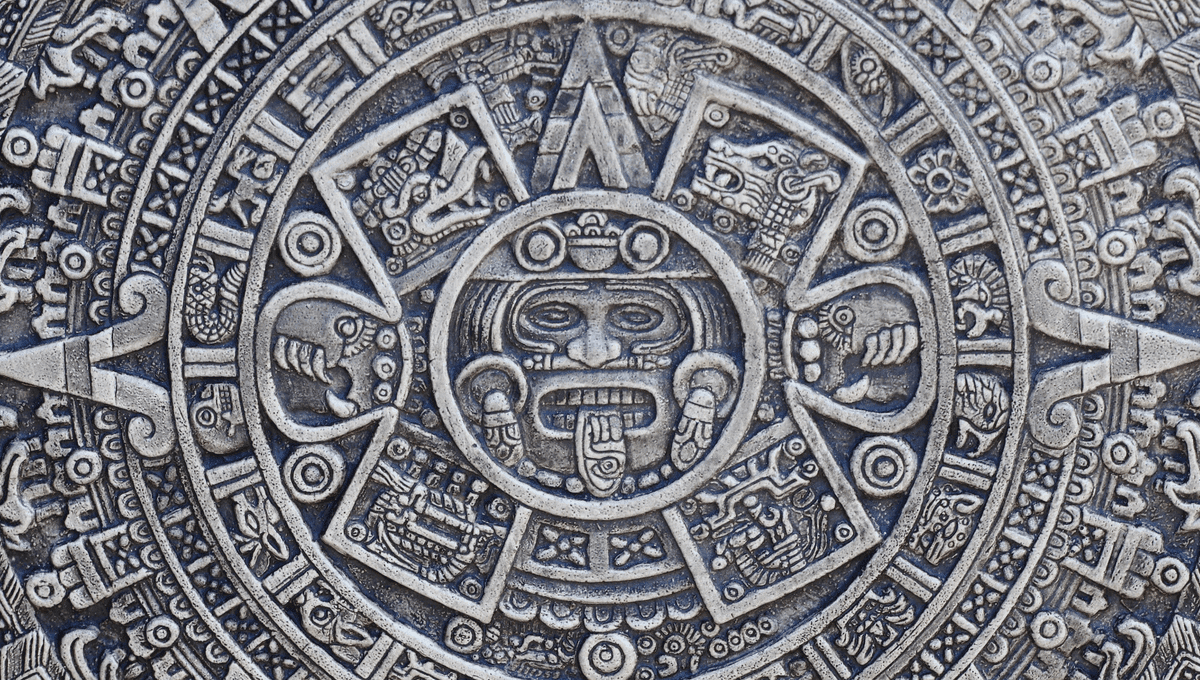
One of the most famous and important surviving artifacts from the Aztec Empire reveals how they expected the apocalypse to go down – but also the rather sneaky way they figured out to avoid it.
If there’s only one thing you know about classical Mesoamerican apocalypse myths, it’s probably this: that the world ended in 2012, and the Mayas predicted it.
Of course, as archaeologists (and, you know, calendar owners throughout the last decade) were quick to point out, that was never true – the Maya didn’t even really have an end-of-the-world myth. A few thousand miles North, however, and there was another civilization that definitely did worry about the impending apocalypse: the Aztecs.
So worried were they, in fact, that they regularly offered up human lives in the hopes of staving off The End for another year. At least, that’s what Susan Milbrath, a Latin American art and archaeology curator at the Florida Museum of Natural History, reads in the gigantic relic known as the Sun Stone: a 24-ton, circular, basalt calendar stone which, she believes, we’ve been misunderstanding for centuries.
While experts have long thought that the central image in the Stone shows Tonatiuh, the Aztec sun deity, Milbrath’s 2017 paper on its eclipse imagery suggests the depiction may be more nuanced. Rather than simply portraying the face of the heart-devouring god, she interpreted the image as showing their death during an eclipse – an event that the civilization believed would lead to a global and earth-shaking apocalypse.
And this wasn’t due to happen on some far-off, forgettable date, either. Based on the (really pretty metal) drawings surrounding Tonatiuh – claws clutching human hearts, alluding to an eclipse monster; a circle of signs symbolizing the 260-day calendar used by the priesthood to predict future events; fire serpents, representing a constellation closely associated with the Sun in the dry season – modern scholars are able to figure out exactly when the Aztecs thought the world was due to quake itself into oblivion: 4 Olin.
To put that into context, it’s kind of like if today we all knew the world was ending on, say, August 19. It’s just a date; it turns up every year – and if we don’t want this to be the last one we see, we should probably do something to stop our impending doom halfway through summer break.
For the Aztecs, you may not be surprised to learn, that something was human sacrifice. The Sun Stone was “almost… like a stage for public ritual,” Milbrath said: with each 4 Olin, a high-value prisoner would be sacrificed to the sun deity in a desperate bid to stop an eclipse and keep the world turning for another year.
It sounds gruesome, but to a terrified populace, it must have made sense. “Pregnant women stayed indoors [during eclipses] because they thought their children would be born with horrible deformities,” explained Milbrath. “Most of the details of how the Aztecs dealt with solar eclipses are not well-known, but they definitely did try to scare away the monster they thought was eating the Sun.”
Indeed, while the Empire is mostly known today by way of its bloodthirsty reputation for ritual human sacrifice and decapitation-ball, Milbrath believed the real lesson from the ominous new interpretation of the Sun Stone is more scholarly than savage.
“They did perhaps have a more foreboding look on their future than people in today’s societies do,” she said. “But the Aztecs were more sophisticated in terms of astronomy than people realize.”
And for proof of that, look no further than the sneaky little get-out-of-apocalypse-free card they may have snuck into their predictions.
“When they created their mythology, they made sure that 4 Olin would never occur with an eclipse in their world,” Milbrath pointed out. “The possibility of purposeful manipulation should not be ignored.”
Source Link: How And When The World Will End, According To The Aztec Sun Stone